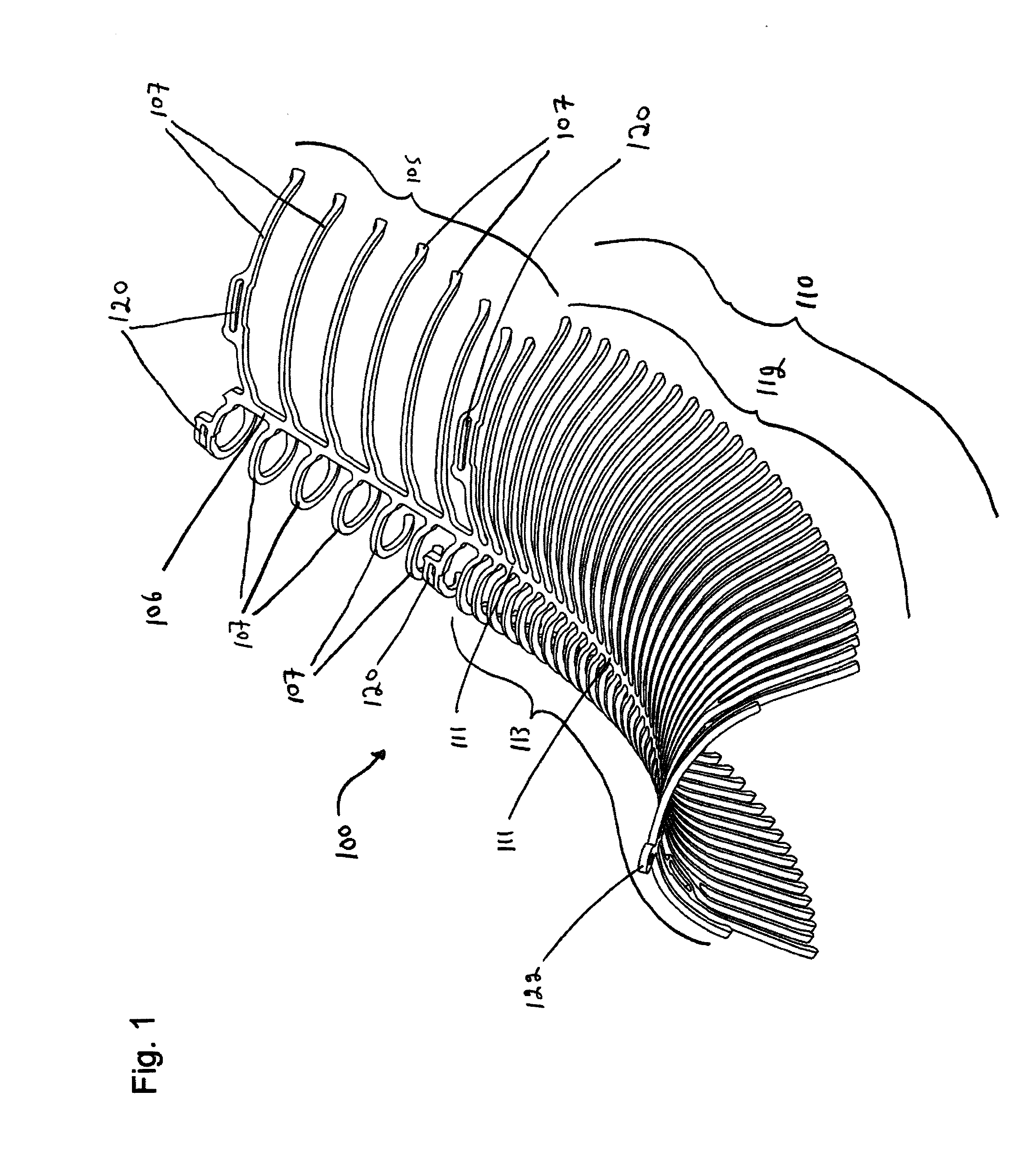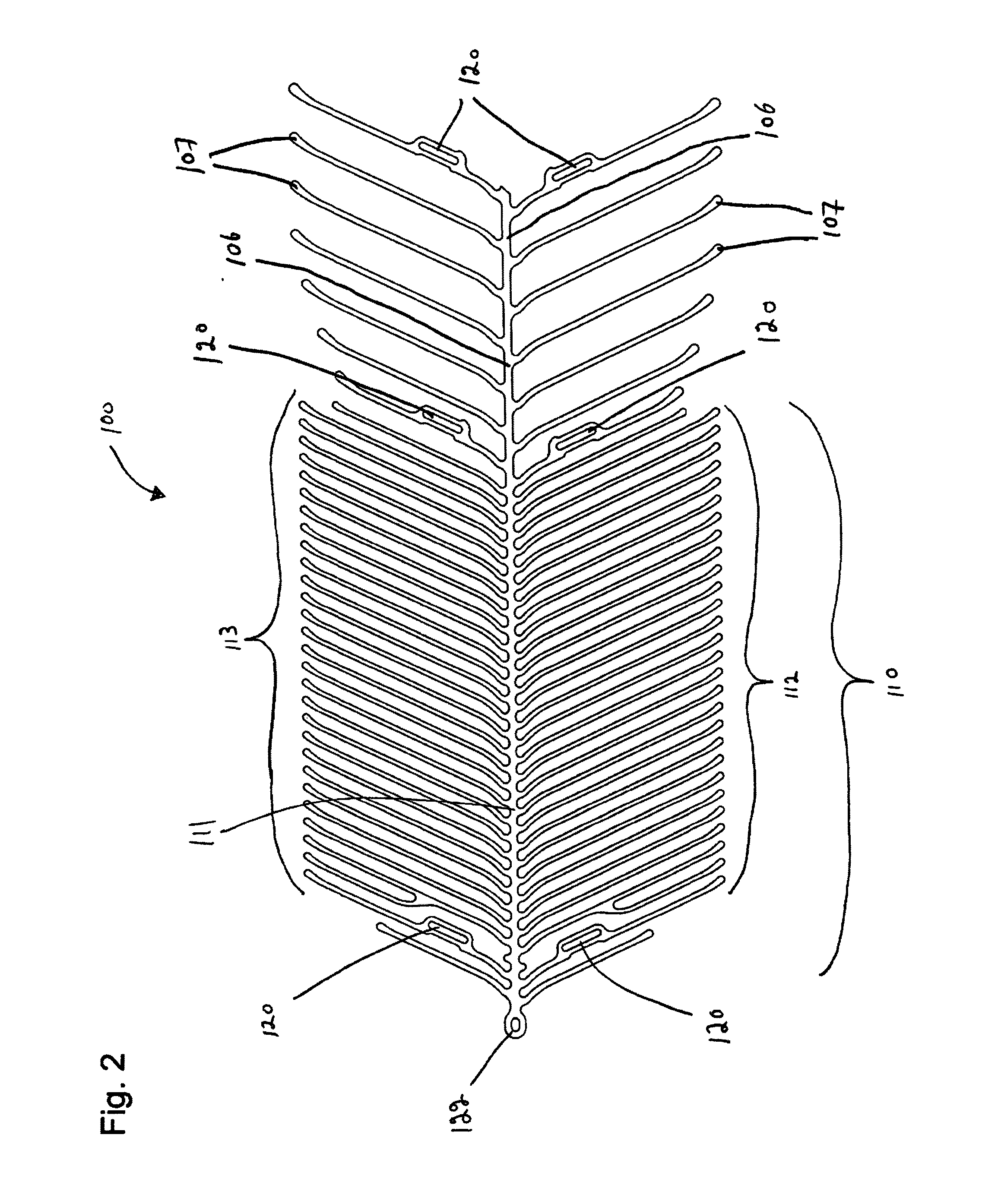Endovascular prosthesis and method for delivery of an endovascular prosthesis
a technology of endovascular prosthesis and endovascular prosthesis, which is applied in the field of endovascular prosthesis and the delivery method of endovascular prosthesis, can solve the problems of high patient risk, stroke, paralysis or abnormal sensation, etc., and achieve the effect of improving the rotational range of proper placement of the prosthesis, improving flexibility, and facilitating stasis and thrombotic occlusion of the aneurysm
- Summary
- Abstract
- Description
- Claims
- Application Information
AI Technical Summary
Benefits of technology
Problems solved by technology
Method used
Image
Examples
Embodiment Construction
[0052]The present invention relates to an endovascular prosthesis comprising: a first expandable portion expandable from a first, unexpanded state to a second, expanded state to urge the first expandable portion against a vascular lumen; and a retractable leaf portion attached to the first expandable portion, the retractable leaf portion comprising at least one spine portion and a plurality of rib portions attached to the spine portion. In one preferred embodiment of the present endovascular prosthesis, the retractable leaf portion is configured such that a pair of ribs attached on opposite sides of a longitudinally straightened configuration of the spine portion in a plane of view normal to a central axis of the prosthesis defines a shape, in two dimensions, that is substantially non-circular. In another preferred embodiment of the present endovascular prosthesis, the retractable leaf portion is configured such that a pair of ribs attached on opposite sides of a longitudinally stra...
PUM
 Login to View More
Login to View More Abstract
Description
Claims
Application Information
 Login to View More
Login to View More - R&D
- Intellectual Property
- Life Sciences
- Materials
- Tech Scout
- Unparalleled Data Quality
- Higher Quality Content
- 60% Fewer Hallucinations
Browse by: Latest US Patents, China's latest patents, Technical Efficacy Thesaurus, Application Domain, Technology Topic, Popular Technical Reports.
© 2025 PatSnap. All rights reserved.Legal|Privacy policy|Modern Slavery Act Transparency Statement|Sitemap|About US| Contact US: help@patsnap.com



